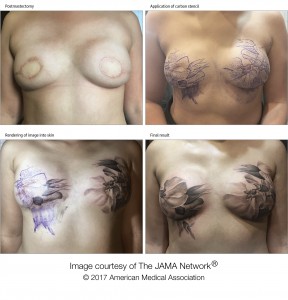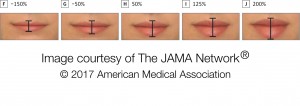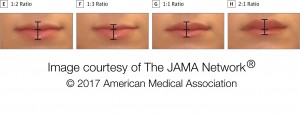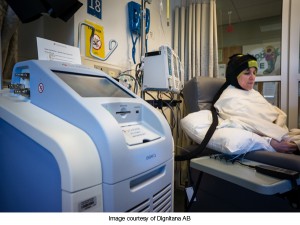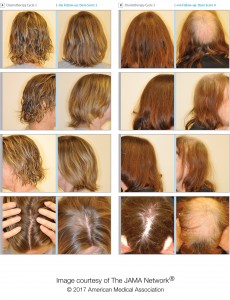EMBARGOED FOR RELEASE: 11 A.M. (ET) TUESDAY, FEBRUARY 21, 2017
Media Advisory: To contact Peter J. Snyder, M.D., email Abbey Anderson at Abbey.Anderson@uphs.upenn.edu or call 215-349-8369. To contact T. Craig Cheetham, Pharm.D., M.S., email Vincent Staupe at vincent.p.staupe@kp.org or call 510-267-7364.
Related video: There will be a JAMA Report video story on testosterone treatment and health outcomes for you to use in your report. Video will be available under embargo at this link and include broadcast-quality downloadable video files, B-roll, scripts and other images. Please contact JAMA Network Media Relations at mediarelations@jamanetwork.org if there are questions.
JAMA and JAMA Internal Medicine
Five new JAMA and JAMA Internal Medicine studies published online compare a variety of health outcomes in men with low testosterone who used testosterone.
Four of the five testosterone-related studies are from the Testosterone Trials, a group of placebo-controlled, coordinated trials designed to determine the efficacy of testosterone gel use by men 65 or older with low testosterone for no apparent reason other than age. The studies examined the health outcomes of memory and cognitive function, bone density, coronary artery plaque volume and anemia.
A fifth study, which was not part of the Testosterone Trials, examined the association of testosterone replacement therapy with cardiovascular outcomes.
JAMA
In this study, researchers tested if treating older men with low testosterone with a testosterone gel for a year would slow the progression of coronary artery plaque volume compared with a placebo gel. The study included 138 men (73 who received testosterone gel and 65 who received placebo gel).
Findings: Among the men, using testosterone gel for one year compared with placebo gel increased the amount of coronary artery noncalcified plaque, an early sign of increased risk of heart problems. Larger studies are needed to understand the clinical implications of this finding.
Authors: Peter J. Snyder, M.D., of the University of Pennsylvania, Philadelphia, and colleagues as part of the Testosterone Trials.
To place an electronic embedded link to this study in your story: This link will be live at the embargo time: https://jamanetwork.com/journals/jama/fullarticle/10.1001/jama.2016.21043
JAMA
Researchers also wanted to know if older men with low testosterone who used testosterone gel for one year compared with placebo gel improved their memory and cognitive function. Among 493 men with age-associated memory impairment (AAMI), 247 received testosterone gel and 246 received placebo for one year.
Findings: Using testosterone gel for one year compared with placebo gel was not associated with improved memory or cognitive function.
Authors: Peter J. Snyder, M.D., of the University of Pennsylvania, Philadelphia, and colleagues as part of the Testosterone Trials.
To place an electronic embedded link to this study in your story: This link will be live at the embargo time: https://jamanetwork.com/journals/jama/fullarticle/10.1001/jama.2016.21044
JAMA Internal Medicine
In this study, researchers wanted to determine if older men with low testosterone and mild anemia could improve their anemia by using testosterone gel for one year. Of the 788 men enrolled in the Testosterone Trials, 126 were anemic at the start and, of those, 62 had anemia of known causes.
Findings: Testosterone gel increased hemoglobin levels and corrected the anemia (of both known and unknown causes) in older men with low testosterone more than placebo gel.
Authors: Peter J. Snyder, M.D., of the University of Pennsylvania, Philadelphia, and coauthors as part of the Testosterone Trials.
To place an electronic embedded link to this study in your story: This link will be live at the embargo time: https://jamanetwork.com/journals/jamainternalmedicine/fullarticle/10.1001/jamainternmed.2016.9540
JAMA Internal Medicine
Another question researchers examined was whether using testosterone gel would help older men with low testosterone improve their bone density and strength. This study included 211 men, of whom 110 received testosterone gel and 101 got the placebo gel.
Findings: Using testosterone gel for one year by older men with low testosterone increased bone density and strength compared with placebo, more so in the spine than hip and more so in trabecular bone than cortical-rich peripheral bone.
Authors: Peter J. Snyder, M.D., of the University of Pennsylvania, Philadelphia, and coauthors as part of the Testosterone Trials.
To place an electronic embedded link to this study in your story: This link will be live at the embargo time: https://jamanetwork.com/journals/jamainternalmedicine/fullarticle/10.1001/jamainternmed.2016.9539
JAMA Internal Medicine
This study, which was not part of the Testosterone Trials, examined the association between testosterone replacement therapy (TRT) and cardiovascular outcomes in men 40 or older with low testosterone at Kaiser Permanente California. The study, which was observational, included 8,808 men who were ever prescribed TRT given by injection, orally or topically.
Findings: Among men with low testosterone, dispensed testosterone prescriptions were associated with a lower risk of cardiovascular outcomes over a median follow-up of about three years.
Authors: T. Craig Cheetham, Pharm.D., M.S., of the Southern California Permanente Medical Group, Pasadena, and coauthors.
To place an electronic embedded link to this study in your story: This link will be live at the embargo time: https://jamanetwork.com/journals/jamainternalmedicine/fullarticle/10.1001/jamainternmed.2016.9546
Editor’s Note: Please see the articles for additional information, including other authors, author contributions and affiliations, financial disclosures, funding and support, etc.
# # #
For more information, contact JAMA Network Media Relations at 312-464-JAMA (5262) or email mediarelations@jamanetwork.org.
Embed the JAMA Report video: Copy and paste the link below to embed the related JAMA Report video on your website.


